The original Marvel’s Spider-Man was basically a guaranteed success when it launched in 2018, combining the budget of a PlayStation first-party title with the design chops of Insomniac Games and the mass appeal of one Marvel’s most recognisable superheroes. To nobody’s surprise, it did exceptionally well, spawning a smaller-scale follow up in Miles Morales that bridged the gap between not only the first and next chapters of the story but the previous and new generations of PlayStation.
The pressure was well and truly on then, with the fully-fledged sequel responsible for not only proving that Marvel’s Spider-Man was more than a shiny open world and an expensive licence, but also carrying a torch for the PlayStation 5’s hardware capabilities and unique features.
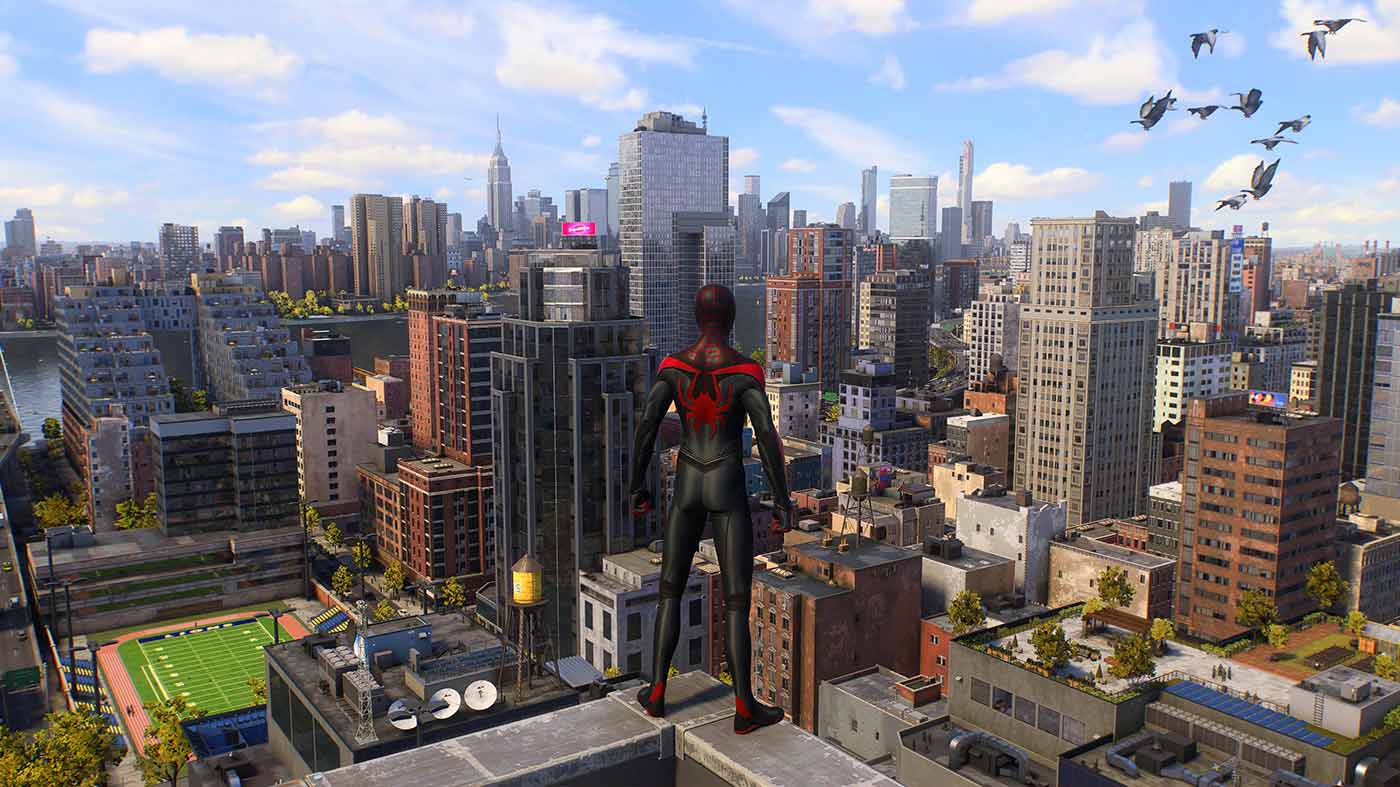
This follow-up is obviously incredibly exciting for fans of the first game, picking up its story in a mostly-peaceful New York where there’s not just one, but two web-swinging heroes now out making the streets a safer place. It gives us a great look at the lives of both Peter Parker and Miles Morales, as both try to balance life’s typical challenges like mortgages or education with the pressures of herodom, at least before introducing new villains and catastrophes to truly throw them back into the fray.
Allow me to table the table-setting for a moment though, in lieu of the one statement that I feel really emphasises what makes this sequel exciting beyond just more of Insomniac’s great take on this franchise – having access to, and being built specifically for, the PS5 and its super-fast storage is genuinely transformative for Marvel’s Spider-Man 2. This is true for numerous reasons, reasons I’ll expand upon as we go, but it all starts with one of the game’s greatest new features – the Web Wings.
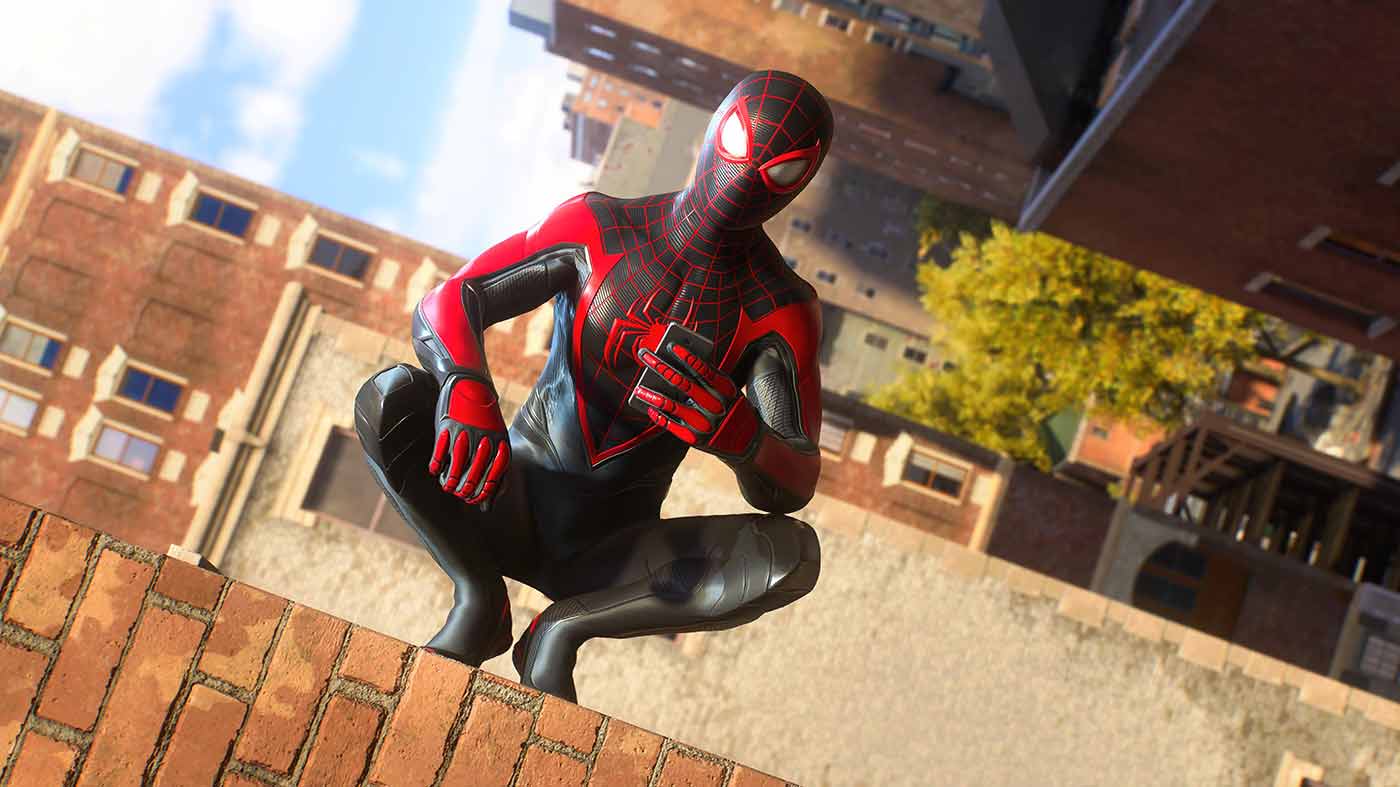
Movement and traversal in the open city environment of Manhattan in the earlier games was already a joy. Insomniac nailed the crucial fundamentals of being a Spider-Man and swinging through city streets, and that carries across here with enough minor tweaks and improvements to make it more fun than ever. But the Web Wings are something else, making it possible to cover impressive distances at great speed, and with further upgrades and practice catching wind tunnels and updrafts you’re essentially given the tools to Buzz Lightyear your way from one end of the map to the other.
Where some games might reserve the kind of game-changing momentum and freedom afforded by the Web Wings for those who “earn” it, Marvel’s Spider-Man 2 gives you the power to soar and they keys to the city almost from the jump, even before the game’s near-instant fast travel becomes a possibility. It’s as if Insomniac absolutely needed players to know upfront that this – THIS – is what superfast storage actually means for game design. Not just faster loading screens, but faster everything.
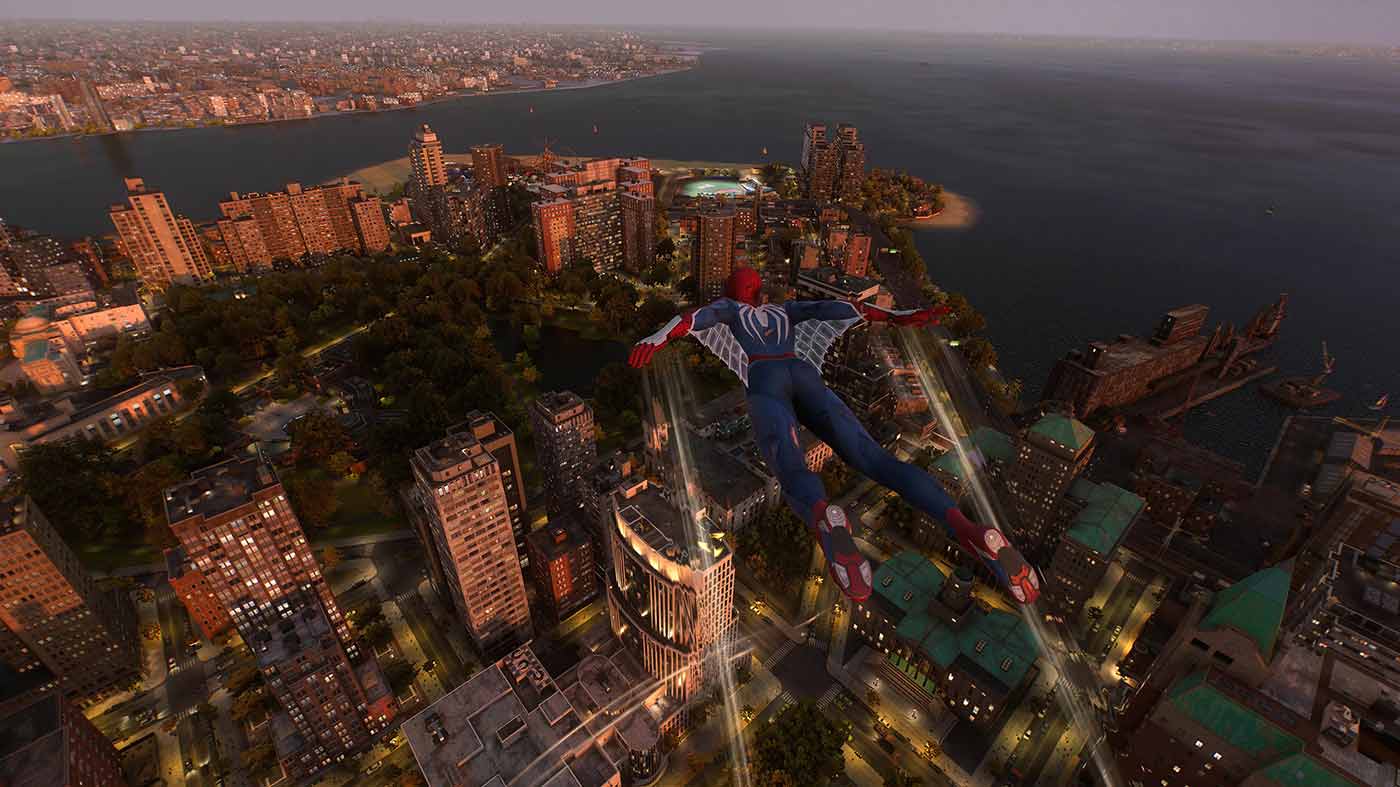
It’s a notion that’s baked into so much of the game, from facilitating not only a bigger overall play space in what is an approximate doubling of the map from the original Marvel’s Spider-Man, but also bigger moments. Those spectacular set-piece encounters and tussles with iconic villains in the previous games were already a thrill, but when you’re chasing a rampaging Lizard through the entire city or being thrown multiple blocks in a split second by a skyscraper-sized Sandman it becomes clear how much more room Insomniac has been able to give itself for activities. It can’t be understated just how much more impactful the kind of sweeping, carefully-crafted recreation of a city like New York is when you feel like all of it is in reach at any point in time.
GET IT FROM AMAZON FOR $99 WITH FREE SHIPPING.
And, of course, echoing the game’s tagline of “Greater Together” is a tale of two Spider-Men (Spider-Mans?) that leverages all of this newfound breadth again with intertwining character arcs in an ambitious dual-protagonist setup. Plucking both Peter Parker and Miles Morales from their solo starring roles in the previous games and giving players access to both their perspectives is a winning idea, even if it does further illustrate how much more interesting Miles is over his mentor in this version of the universe. Importantly, Insomniac hasn’t just put all of its eggs into these two silken baskets but also gives plenty of attention to the supporting roles on both sides and takes the opportunity to bridge the gap between their respective communities.

In case it isn’t obvious, I’m doing as much as I can to avoid divulging just about anything to do with the major narrative beats in Marvel’s Spider-Man 2, because it’s all best experienced first-hand. Broadly, and in line with what Insomniac’s been happy to share pre-release, we’re introduced to Kraven the Hunter as one major antagonist in the game. Taken on his own merit, Insomniac’s Kraven is a fantastic villain with refreshingly uncomplicated motivations for invading New York with his army of hunters. Where his addition to the hotpot of scumbaggery that exists in The Big Apple really adds flavour though is his targeting of other iconic Spider-Man supervillains.
I mentioned the Lizard and Sandman, both who are just folks trying to live their lives and repent in peace before finding themselves desperate targets unable to control the worst parts of themselves. I’d stop short of pretending that any characters here, hero or villain, are any less cartoony than in your average Marvel cinematic blockbuster, but Insomniac has shown that it absolutely knows how to draw out the best in each and use the full width and breadth of the medium to capture their every angle. Obviously the eventual introduction of Venom has ramifications that go far beyond the Kraven storyline, and while I naturally can’t go too much about that, I can absolutely say that the game earns every moment of its intense third act by having put the groundwork in leading up.
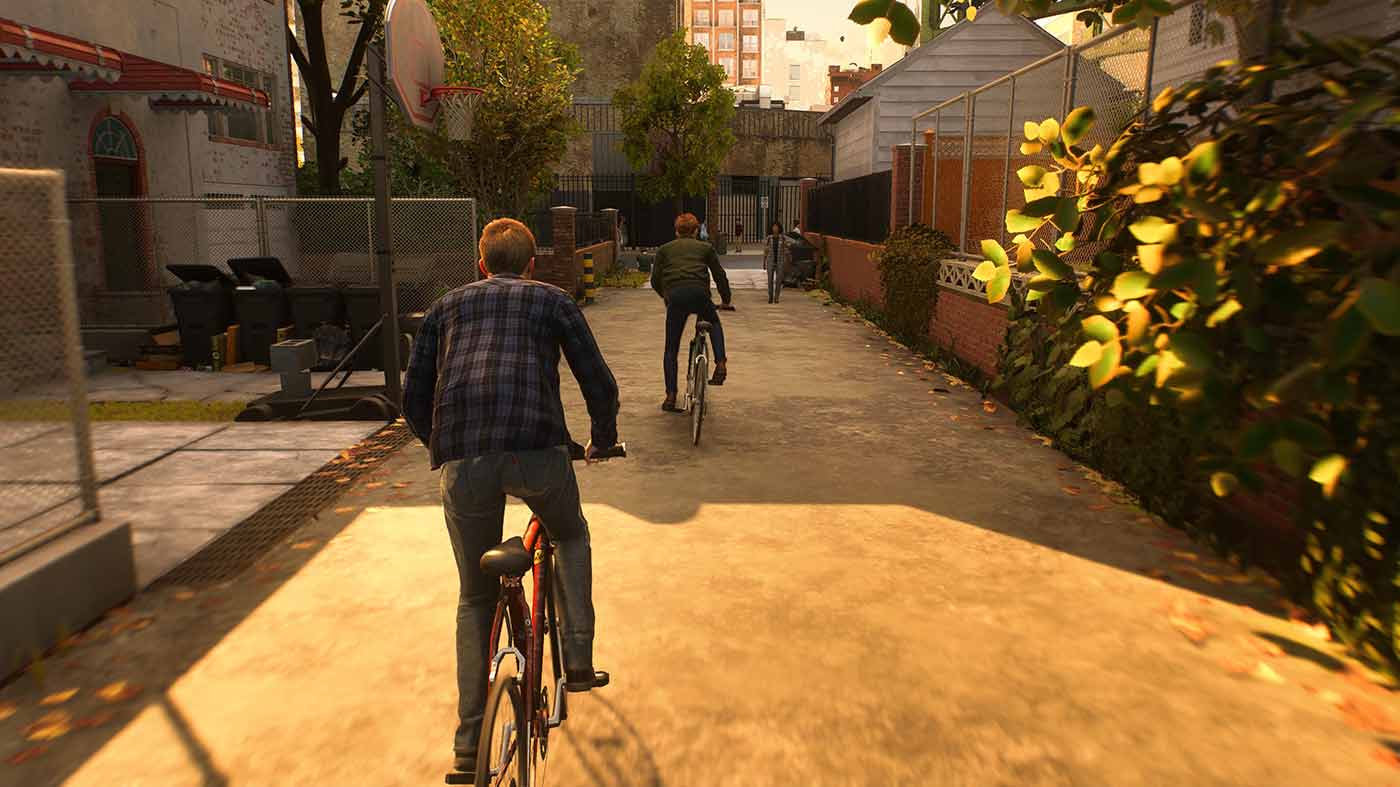
The tools at your disposal to deal with New York’s finest foes have been expanded over anything seen in Spider-Man or Miles Morales as well. Insomniac was working with a solid, if thin base when it comes to combat in the previous games and it’s done well to ramp things up here. The basics are largely familiar with both Peter and Miles able to use the unique agility and mobility afforded by their Spidey powers to face down multiple foes with ease. This time around, each is also aided by a number of extra skills and gadgets that greatly expand their potential and grow over time to keep things interesting – Peter with his high-tech Iron Spider exoskeleton business and eventual Symbiote powers and Miles with his beefed-up Venom powers.
There’s a good amount of interplay at times, as you’ll often cross paths with the other Spider-Man when you’re out smacking down bad guys on the streets, and there are moments I won’t spoil where the game will pair you up with some other exciting characters. One sequence in particular, that involves teleportation, is sublime.
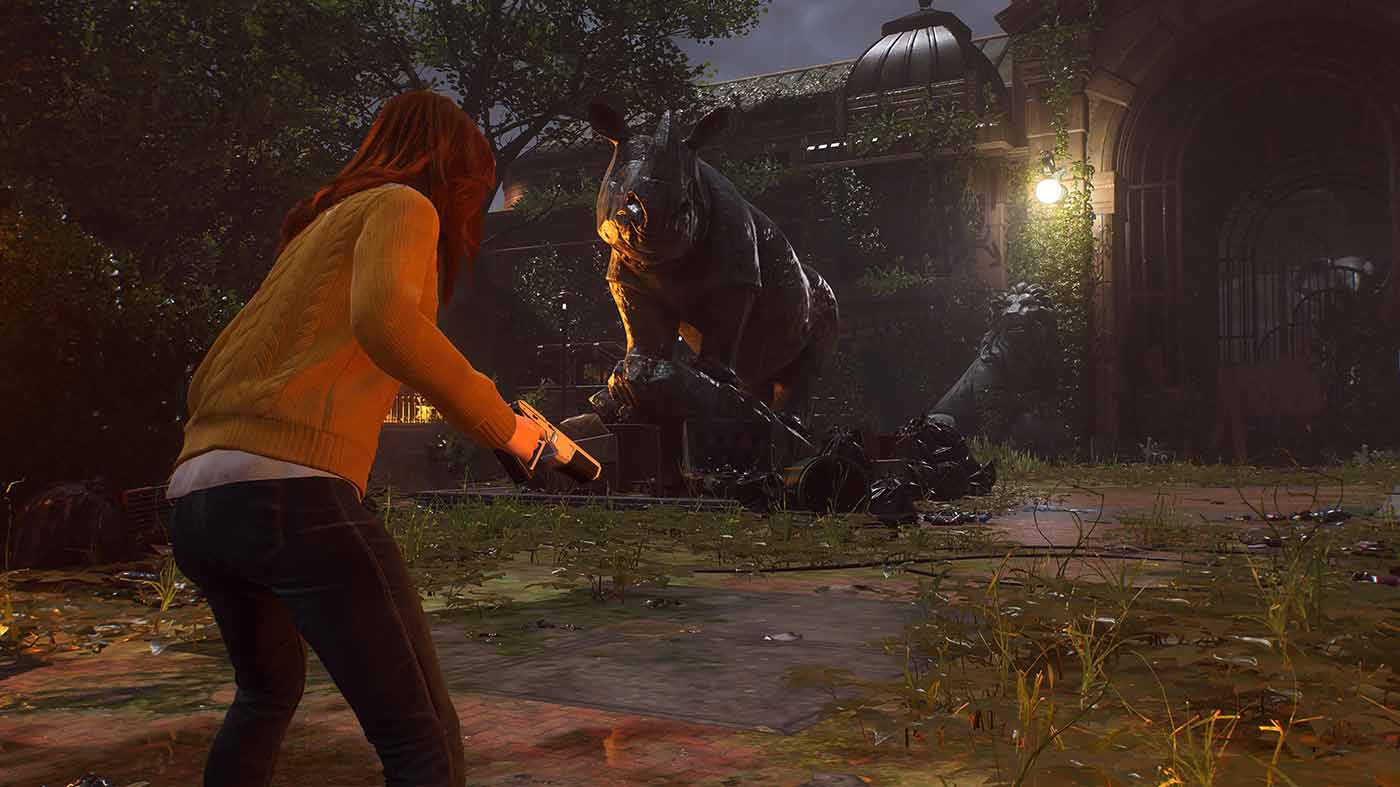
The density of enemies is often much higher in this sequel, so using everything in your arsenal to control crowds is essential. Ensnaring a large group of goons into one spot with a gadget and then absolutely destroying them with a symbiote-powered wallop is never not intoxicating (and maybe a little more deadly than the game wants you to believe but superhero logic is comic superhero logic, right?) There’s also some opportunity to mix and match what Peter or Miles have equipped to certain ability or gadget slots, though even by the end of the game you won’t have acquired a big enough variation for the choices to be overwhelming. Your options naturally change often enough over time that the desire to constantly tinker isn’t really there, anyway.
Parrying is also now possible and crucial against larger enemies, though some might find it hard to shake now-three games’ worth of muscle memory in staying alive mostly by hitting the dodge button every few seconds. The game also contradicts its own visual language at times when it comes to how it signals moments to parry or dodge particular attacks, but once you do get into the rhythm of managing both it can be incredibly satisfying.
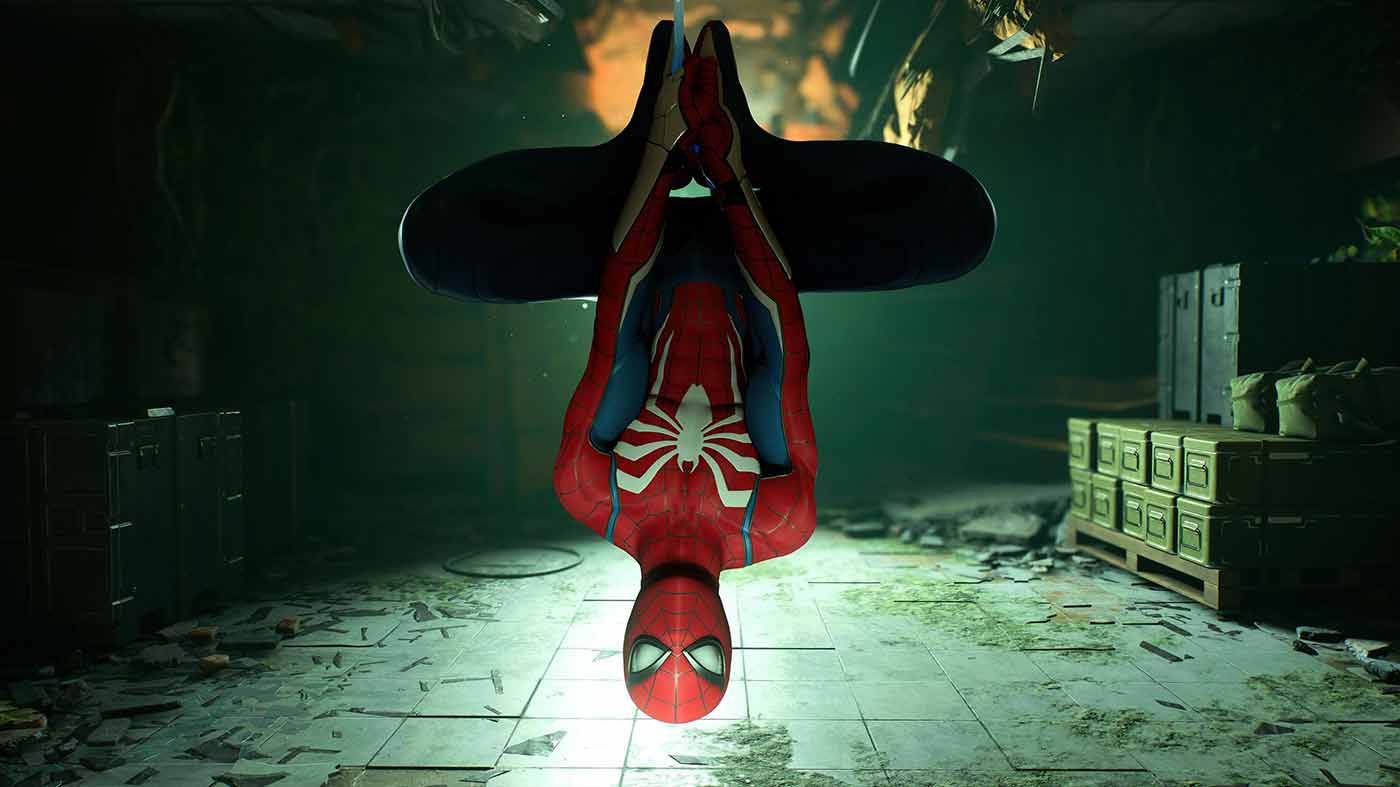
Stealth remains an option in many scenarios. Interestingly, Insomniac hasn’t shied away from how straightforward and breezy stealth was previously. You’re still pretty well able to wipe out entire buildings of goons by webbing them up one (or two) at a time and literally hanging them on display for their friends to see with little reaction. In fact, another new ability allows you to create a web line from just about any two points – with essentially no restrictions – and just traipse freely through the open air to scoop up unsuspecting folks and decorate the halls with baddie baubles. If Web Wings feel like a cheat code for exploring New York, the Web Line feels like a cheat code for stealth. It’s bloody brilliant.
Perhaps my only real gripe when it comes to tussling with the ne’er-do-wells of New York are that things do start to get repetitive as time goes on. Progression feels a little washy with only maybe the first third of each of your three skill trees (Peter, Miles and a shared one) feeling like they have real gameplay impact and the rest being more incremental. There’s also not a lot of variation in enemy types, at least within the ranks of the different groups you’ll contend with as the game goes on. The closing hours of the game especially are a bit of a slog, not just because of the visually and mechanically dull street fodder but a number of overused boss mechanics that almost undermine some of the story stuff.
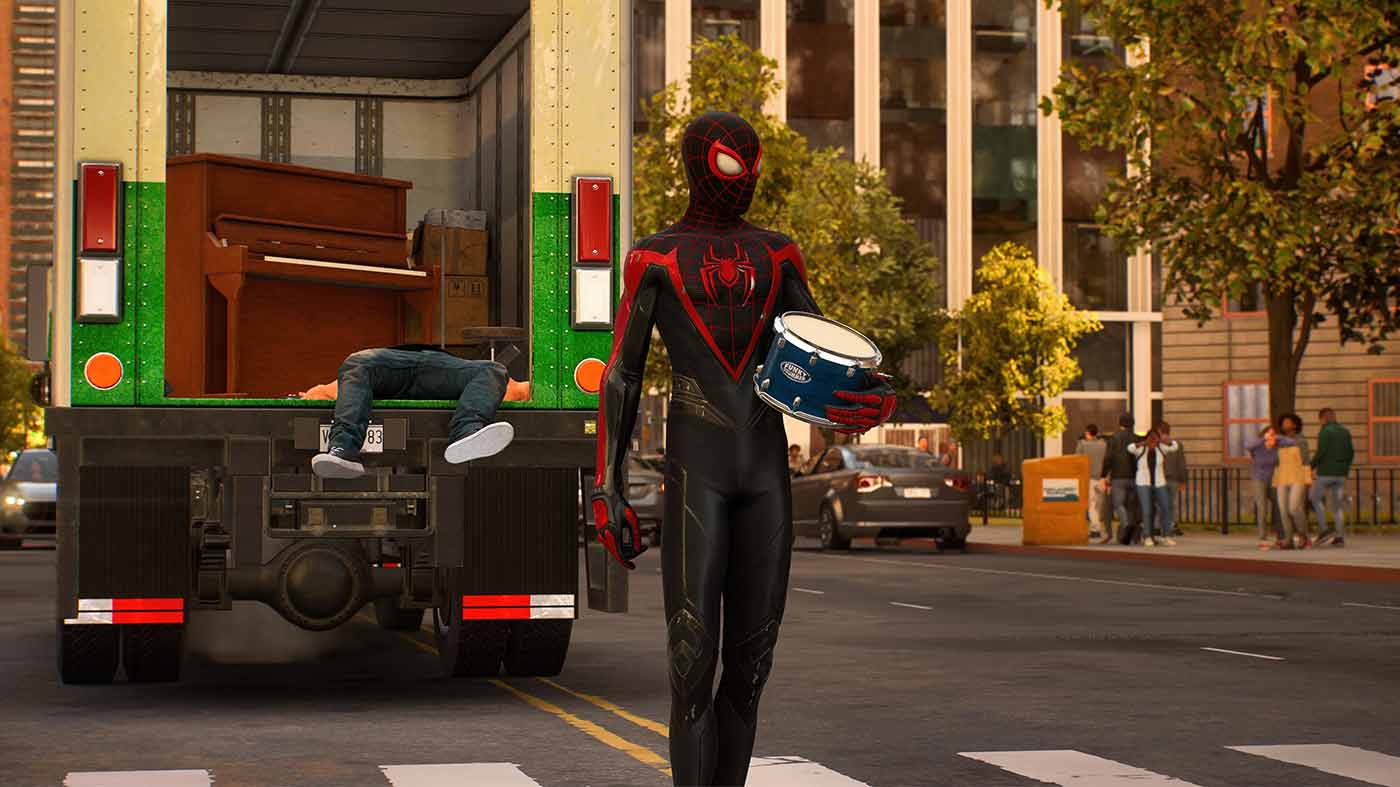
Thankfully, Insomniac has done well to course-correct a lot of the repetition that came from the extraneous activity out in the open city map in the previous games with a heap of genuinely interesting side content. There’s absolutely still a swathe of simple puzzles, mini-games and collectibles and while not all of it lands, it’s mostly better than what’s come before and often quite meaningful to the wider narrative, a deeper understanding of key characters, or both. Some of it is also just stupidly fun or endearing – with the kinds of personal and far-reaching stakes in these stories it’s important to also include moments of levity and warmth and a lot of that comes through in the things you’ll see and do as you move around New York.
Many of my favourite parts of this game are in the more focused, intimate sequences that take players into bespoke locations or on lightly-guided rails through specific parts of the city, and do a great job of balancing out the open world stuff. Not everyone will be into the forced-stealth MJ sections, mind, but the variation is definitely appreciated. I adored one moment involving a character that Insomniac’s kept under wraps as being playable at all. The numerous opportunities to meet the rich and diverse populace of Insomniac’s New York and even explore its history are a true treat.
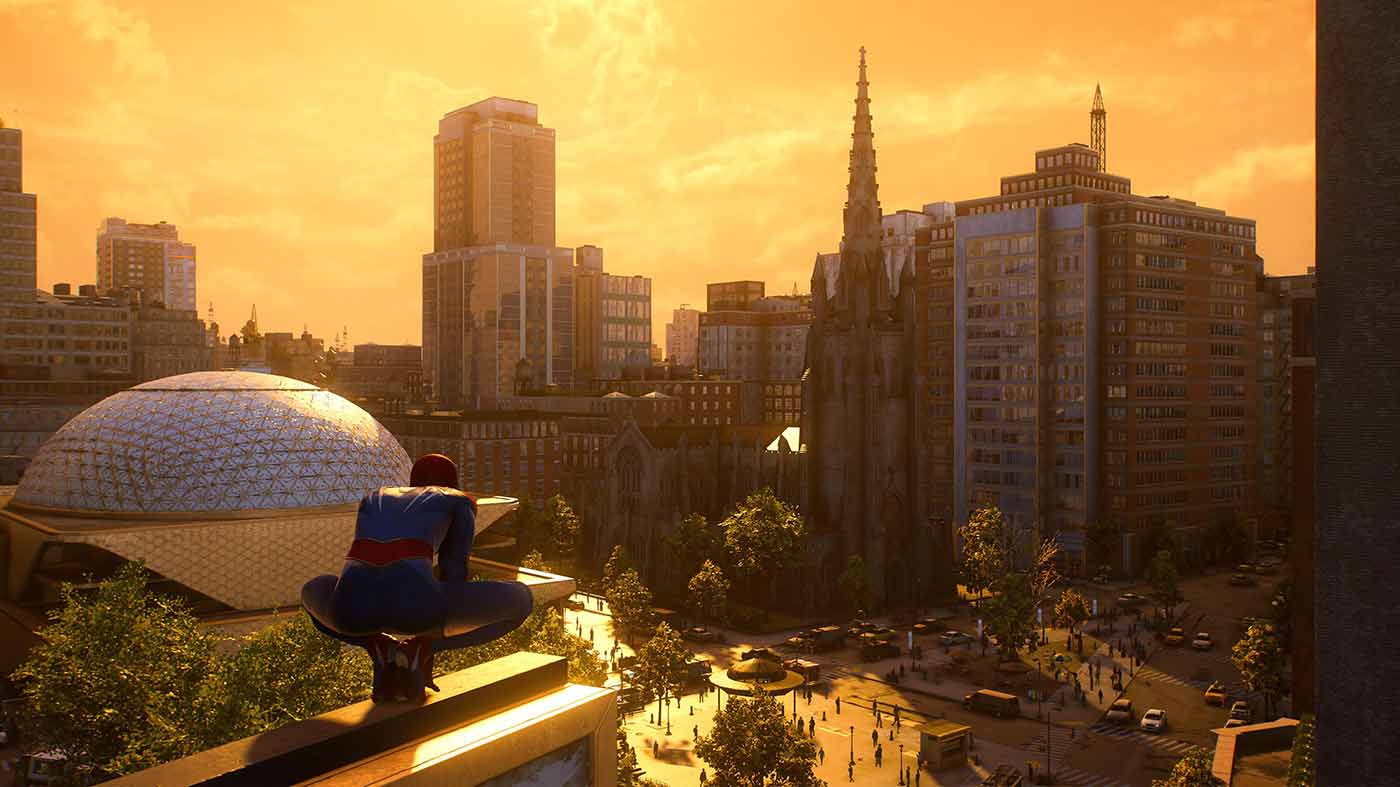
Something I’m also deeply appreciative of is that doubling the play space and number of protagonists hasn’t resulted in an immensely longer game. With so many studios willing to stuff their open worlds with content for the sake of content, a little editing goes a long way and Marvel’s Spider-Man 2 is actually just about the same length as the first game. My journey to 100% completion and a platinum trophy took around 35 hours if my PlayStation’s timekeeping is to be believed, and aside from the aforementioned hit to the pace towards the end it rarely felt like any of that time was wasted or drawn out. Insomniac’s clearly had the comfort of an astronomical budget to be able to do cool and expensive things only for as long as they’re interesting and then just move onto new ones, and it’s a massive boon.
Speaking of budgets, I don’t think it’s any secret that this is an attractive game. Possibly even the best-looking game of its kind that I’ve played. The real beneficiary of Marvel’s Spider-Man 2 being built as a wholly new-gen experience is the sheer scope of its world at a macro level combining with unmatched detail at a micro one.
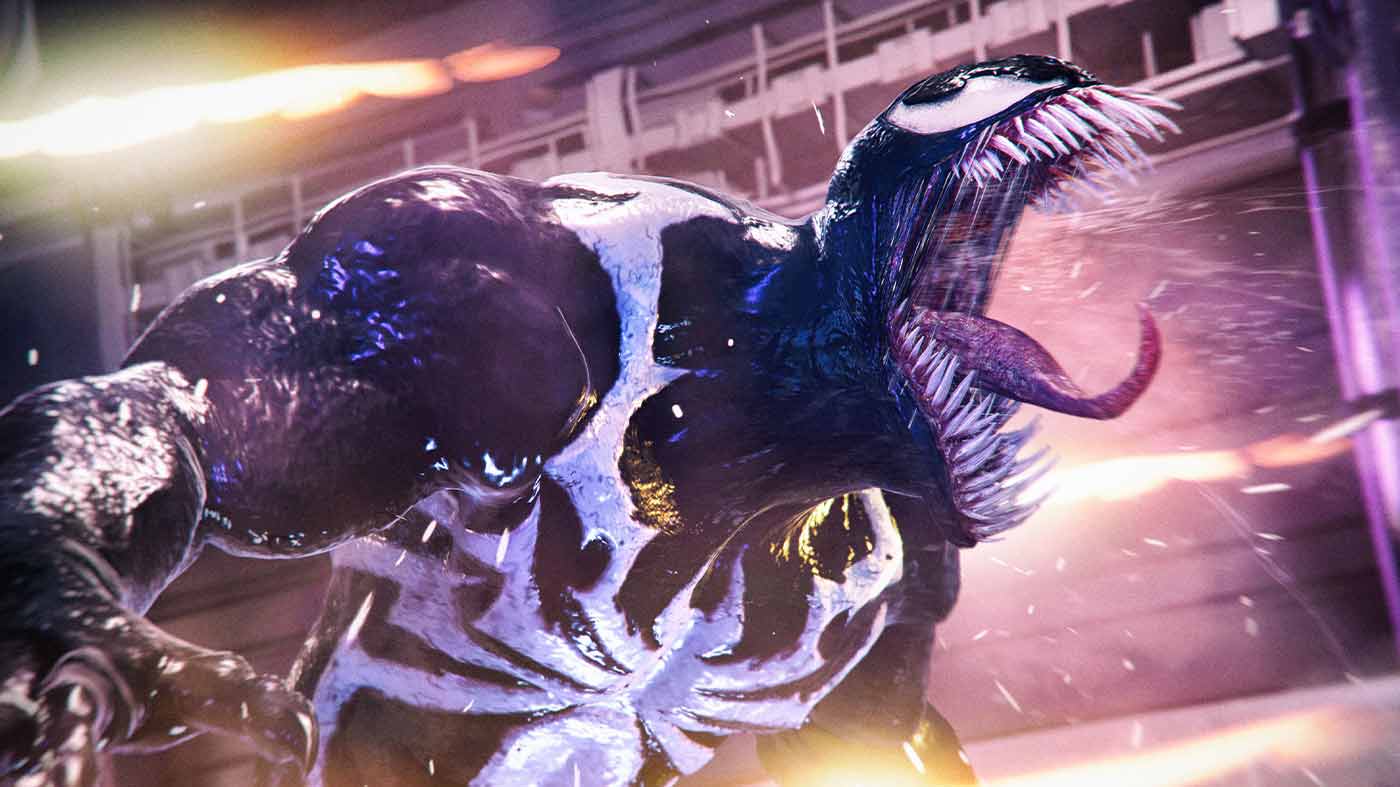
New York and its diverse boroughs stretching way out into the distance as you soar above skyscrapers, the bustle of people and cars and the time of day and weather always shaping your view so that no street ever looks the same twice, the tiny details on characters’ skin or the way that Peter and Miles’ suits show battle damage through story mission and cutscenes. It’s triumphant at every scale and there are just too many things to gush about in the frame of a review when it comes to the nearly impeccable presentation here – I say nearly because the jump from the souped-up cutscene visuals back to on-the-street fidelity can sometimes be jarring but that’s less a complaint and more an emphasis on how stunning the game can be at its best.
Also, it has to be said, that Insomniac’s rendition of Venom is fucking terrifying and incredible. So there’s that.
Likely thanks in part to the inclusion of ray-tracing features in all visual modes, there are smaller-scale, controlled gameplay segments here that absolutely blew me away when it came to the insane level of detail and use of lighting. The game features just two distinct options for balancing visuals and performance, though these can both be further tweaked with 120Hz and VRR options for those that have compatible displays, which remains a fantastic way to bridge the game between high fidelity and high performance.
Insomniac and PlayStation aren’t shy of touting their incredibly comprehensive suite of accessibility options either, and once again there’s a ton here to smooth out the experience for those who might need it from slowing down the entire game at the touch of a button to adding a cutoff for super high or super low frequency sounds – something I actually found very useful.




